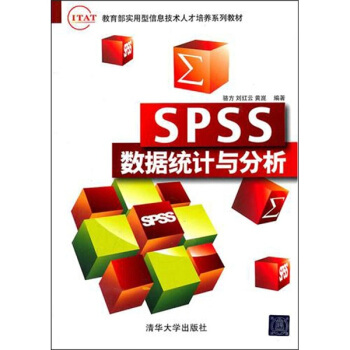具體描述
內容簡介
MEAN 是最流行的Web 開發工具的集閤,包括MongoDB、Express、AngularJS 和Node.js。本書從MEAN 的核心框架開始,詳細闡述瞭每一種框架的關鍵概念,如何正確地設置它們,以及如何用流行的模塊把它們連接在一起。通過本書的實例練習,你能搭建自己的MEAN 應用架構,通過添加認證層,開發MVC 架構支持自己的項目開發。最後,你將學會使用不同的工具和框架加快你的日常開發進程。
本書適閤對利用MEAN 開發現代Web 應用感興趣的Web 開發者或JavaScript 全棧開發者閱讀。
作者簡介
Amos Q. Haviv 軟件工程師,技術顧問,MEAN.IO和MEAN.JS的創建者。Amos有近十年的全棧開發經驗,曾就職於多個創業公司和企業。過去的三年中,Amos一直在使用JavaScript的全棧解決方案進行開發,包括Node.js和MongoDB,以及AngularJS一類的前端MVC框架。2013年,他創建瞭MEAN應用的第一個樣闆MEAN.IO,目前在www.meanjs.org繼續開發MEAN解決方案。他還在各類會議上做一些Web前沿技術的演講。此外,他還為多傢公司的開發團隊提供指導。
內頁插圖
目錄
第1 章 MEAN 簡介 1
1.1 三層Web 應用開發 1
1.2 JavaScript 的演進 2
1.3 MEAN 簡介 3
1.4 安裝MongoDB 4
1.4.1 在Windows 上安裝MongoDB 5
1.4.2 在Mac OS X 和Linux 上安裝MongoDB 7
1.4.3 使用MongoDB 命令行工具 8
1.5 安裝Node.js 9
1.5.1 在Windows 上安裝Node.js 10
1.5.2 在Mac OS X 上安裝Node.js 11
1.5.3 在Linux 上安裝Node.js 12
1.5.4 運行Node.js 12
1.6 NPM 簡介 13
1.7 總結 18
第2 章 Node.js 入門 19
2.1 Node.js 簡介 19
2.1.1 JavaScript 事件驅動編程 20
2.1.2 Node.js 事件驅動編程 22
2.2 JavaScript 閉包 23
2.3 Node 模塊 24
2.3.1 CommonJS 模塊 24
2.3.2 Node.js 核心模塊 26
2.3.3 Node.js 第三方模塊 26
2.3.4 Node.js 文件模塊 26
2.3.5 Node.js 文件夾模塊 27
2.4 Node.js Web 應用開發 27
2.5 總結 34
第3 章 使用Express 開發Web 應用 35
3.1 Express 簡介 35
3.2 Express 安裝 36
3.3 創建第一個Express 應用 36
3.4 應用、請求和響應對象 37
3.4.1 應用對象 37
3.4.2 請求對象 38
3.4.3 響應對象 38
3.5 外部的中間件 39
3.6 實現MVC 模式 40
3.7 Express 應用配置 48
3.8 渲染視圖 51
3.8.1 配置視圖係統 51
3.8.2 EJS 視圖渲染 53
3.9 靜態文件服務 53
3.10 配置會話 55
3.11 總結 57
第4 章 MongoDB 入門 58
4.1 NoSQL 簡介58
4.2 MongoDB 簡介 60
4.3 MongoDB 的關鍵特性 61
4.3.1 BSON 格式 61
4.3.2 MongoDB 即席查詢 61
4.3.3 MongoDB 索引 62
4.3.4 MongoDB 副本集 63
4.3.5 MongoDB 分片 64
4.4 MongoDB 命令行工具 65
4.5 MongoDB 數據庫 66
4.6 MongoDB 集閤 66
4.7 MongoDB 增刪改查操作 67
4.7.1 創建新文檔 67
4.7.2 讀取文檔 68
4.7.3 更新已有文檔 69
4.7.4 刪除文檔 70
4.8 總結 71
第5 章 Mongoose 入門 72
5.1 Mongoose 簡介 72
5.1.1 安裝Mongoose 72
5.1.2 連接MongoDB 73
5.2 理解Mongoose 的模式 74
5.2.1 創建User 模式與模型 74
5.2.2 注冊USer 模型 75
5.2.3 使用save()創建新文檔 75
5.2.4 使用find()查找多個文檔 77
5.2.5 使用findOne()讀取單個文檔 79
5.2.6 更新已有文檔 80
5.2.7 刪除已有文檔 81
5.3 擴展Mongoose 模式 82
5.3.1 定義默認值 82
5.3.2 使用模式修飾符 83
5.3.3 增加虛擬屬性 85
5.3.4 使用索引優化查詢 85
5.4 模型方法自定義 86
5.4.1 自定義靜態方法 86
5.4.2 自定義實例方法 87
5.5 模型的校驗 87
5.5.1 預定義的驗證器 87
5.5.2 自定義的驗證器 89
5.6 使用Mongoose 中間件 89
5.6.1 預處理中間件 89
5.6.2 後置處理中間件 90
5.7 使用Mongoose DBRef 90
5.8 總結 91
第6 章 使用Passport 模塊管理用戶權限 92
6.1 Passport 簡介 92
6.1.1 安裝 92
6.1.2 配置 93
6.2 理解Passport 策略 95
6.2.1 使用Passport 的本地策略 95
6.2.2 修改User 模型 97
6.2.3 創建身份驗證視圖 99
6.2.4 修改用戶控製器 101
6.2.5 添加用戶路由 105
6.3 理解Passport 的OAuth 策略 107
6.4 總結 118
第7 章 AngularJS 入門 119
7.1 AngularJS 簡介 119
7.2 AngularJS 的核心概念 119
7.2.1 核心模塊 120
7.2.2 模塊 120
7.2.3 雙嚮數據綁定 121
7.2.4 依賴注入 122
7.2.5 AngularJS 指令 123
7.2.6 AngularJS 應用的引導 124
7.3 安裝AngularJS 125
7.3.1 Bower 包管理器 125
7.3.2 配置Bower 126
7.3.3 使用Bower 安裝AngularJS 126
7.3.4 配置AngularJS 127
7.4 AngularJS 應用的結構 127
7.5 引導AngularJS 應用 130
7.6 AngularJS 的MVC 實體 131
7.6.1 視圖 132
7.6.2 控製器和scope 133
7.7 AngularJS 路由 135
7.7.1 安裝ngRoute 模塊 136
7.7.2 配置URL 模式 137
7.7.3 AngularJS 應用路由 137
7.8 AngularJS 服務 139
7.8.1 預置服務 139
7.8.2 自定義服務 140
7.8.3 服務的使用 141
7.9 管理AngularJS 的身份驗證 141
7.9.1 將user 對象填充到視圖 141
7.9.2 添加身份驗證服務 142
7.9.3 使用身份驗證服務 144
7.10 總結 144
第8 章 創建MEAN 的CURD 模塊 145
8.1 CURD 模塊簡介 145
8.2 配置Express 組件 145
8.2.1 創建Mongoose 模型146
8.2.2 建立Express 控製器 147
8.2.3 編寫Express 路由 152
8.2.4 配置Express 應用 153
8.3 ngResource 模塊簡介 154
8.3.1 安裝ngResource 模塊 154
8.3.2 使用$resource 服務 156
8.4 實現AngularJS 的MVC 模塊 157
8.4.1 創建模塊服務 157
8.4.2 建立模塊控製器 158
8.4.3 實現模塊視圖 161
8.4.4 編寫AngularJS 路由 164
8.5 最終實現 164
8.6 總結 166
第9 章 基於Socket.io 的實時通信 167
9.1 WebSockets 簡介 167
9.2 Socket.io 簡介 168
9.2.1 Socket.io 服務器端對象 169
9.2.2 Socket.io 客戶端對象 171
9.2.3 Socket.io 的事件 171
9.2.4 Socket.io 命名空間 174
9.2.5 Socket.io 的房間 175
9.3 Socket.io 的安裝 176
9.3.1 配置Socket.io 的服務器 177
9.3.2 配置Socket.io 的會話 178
9.4 使用Socket.io 創建聊天室 182
9.4.1 設置聊天服務器的事件處理程序 182
9.4.2 在AngularJS 中創建Socket服務 184
9.4.3 控製器 185
9.4.4 視圖 186
9.4.5 路由 186
9.4.6 實現 187
9.5 總結 189
第10 章 MEAN 應用的測試 190
10.1 JavaScript 測試簡介 190
10.1.1 TDD、BDD 和單元測試 191
10.1.2 測試框架 192
10.1.3 斷言庫 192
10.1.4 測試執行過程管理工具 192
10.2 Express 應用測試 193
10.2.1 Mocha 簡介 193
10.2.2 Should.js 簡介 194
10.2.3 SuperTest 簡介 194
10.2.4
前言/序言
Modern Web Architecture: A Practical Guide to Building Scalable and Responsive Applications In today's rapidly evolving digital landscape, the demand for robust, dynamic, and user-friendly web applications has never been higher. Whether you are a seasoned developer looking to refine your skillset or an aspiring programmer eager to dive into the world of full-stack development, understanding the foundational principles and practical implementation of modern web architectures is paramount. This comprehensive guide, "Modern Web Architecture: A Practical Guide to Building Scalable and Responsive Applications," is meticulously crafted to equip you with the knowledge and hands-on experience necessary to construct sophisticated web solutions that not only meet but exceed user expectations. This book steers clear of a prescriptive, single-technology approach, instead focusing on the why and how behind architectural decisions that lead to resilient and efficient web systems. We will embark on a journey that explores the core concepts underpinning modern web development, emphasizing best practices and adaptable strategies that can be applied across a multitude of technology stacks. Our aim is to foster a deep understanding of the underlying principles, enabling you to make informed choices and architect solutions that are both future-proof and tailored to specific project requirements. Part 1: Laying the Foundation – Understanding Core Web Concepts Before we delve into specific implementation details, it is crucial to establish a strong theoretical bedrock. This section will demystify the fundamental building blocks of the web and the essential concepts that drive modern application development. The Anatomy of a Web Application: We begin by dissecting the typical components of a web application, from the client-side interface that users interact with to the server-side logic that processes requests and the persistent storage that holds vital data. Understanding the distinct roles and interactions of these components is the first step towards effective architectural design. We will explore the client-server model, HTTP requests and responses, and the various layers involved in delivering a seamless user experience. Client-Side Rendering vs. Server-Side Rendering vs. Static Site Generation: A critical architectural decision lies in how your content is rendered. This chapter will provide a detailed exploration of these three dominant rendering strategies. Client-Side Rendering (CSR): We will analyze how JavaScript frameworks and libraries enable dynamic content loading and manipulation directly within the user's browser. We'll discuss its advantages for highly interactive applications, its potential SEO challenges, and techniques to mitigate them, such as dynamic imports and pre-rendering. Server-Side Rendering (SSR): This section will delve into the benefits of generating HTML on the server, leading to faster initial page loads and improved SEO. We will examine common SSR patterns, the trade-offs involved, and when SSR becomes the optimal choice for your application. Static Site Generation (SSG): We will explore the power of pre-rendering entire websites at build time, resulting in unparalleled performance and security. This chapter will cover the use cases for SSG, its integration with content management systems, and its suitability for content-heavy websites with infrequent updates. Understanding APIs and Their Role in Modern Architectures: APIs (Application Programming Interfaces) are the connective tissue of modern web applications. This chapter will provide a thorough grounding in API design principles, focusing on RESTful principles and the emerging GraphQL paradigm. RESTful APIs: We will break down the core tenets of REST (Representational State Transfer), including resources, statelessness, and uniform interfaces. Practical examples will illustrate how to design and consume RESTful services effectively. GraphQL: We will introduce the concepts behind GraphQL, highlighting its advantages in enabling clients to request precisely the data they need, thereby reducing over-fetching and under-fetching. We will compare and contrast GraphQL with REST, discussing their respective strengths and ideal use cases. Data Persistence Strategies: Effectively managing and storing data is fundamental to any web application. This section will provide an overview of various data persistence options, their characteristics, and when to employ them. Relational Databases: We will revisit the principles of relational databases (e.g., PostgreSQL, MySQL), focusing on schema design, normalization, and query optimization. NoSQL Databases: This chapter will explore the diverse world of NoSQL databases (e.g., MongoDB, Redis, Cassandra), categorizing them by their data models (document, key-value, column-family, graph) and discussing their advantages for specific use cases, such as handling unstructured data or achieving massive scalability. Part 2: Designing for Scalability and Performance Building an application that works well for a handful of users is one thing; building one that can handle thousands or millions is an entirely different challenge. This section focuses on the architectural patterns and techniques that enable your web applications to grow seamlessly and perform optimally under heavy load. Architectural Patterns for Scalability: We will explore various architectural styles that lend themselves to scalable applications. Monolithic Architecture: While often a starting point, we will analyze its limitations as an application grows and discuss strategies for managing monolithic applications effectively before considering a move to more distributed systems. Microservices Architecture: This chapter will provide an in-depth examination of the microservices approach, where applications are built as a suite of small, independent services that communicate with each other. We will discuss the benefits of microservices, such as independent deployment, technology diversity, and fault isolation, alongside the complexities they introduce, including inter-service communication and distributed data management. Service-Oriented Architecture (SOA): We will also touch upon SOA as a precursor to microservices, highlighting its emphasis on reusable services and enterprise integration. Load Balancing and High Availability: Ensuring that your application remains accessible and responsive even during peak traffic requires intelligent load distribution and redundancy. This chapter will cover: Load Balancer Types: We will explore different load balancing algorithms (e.g., round robin, least connections, IP hash) and hardware vs. software load balancers. High Availability Strategies: This section will discuss techniques for building fault-tolerant systems, including redundant servers, failover mechanisms, and disaster recovery planning. Caching Strategies for Performance Optimization: Reducing the time it takes to retrieve data is crucial for a snappy user experience. We will explore various caching layers: Browser Caching: Understanding how to leverage browser caching to serve static assets quickly. CDN (Content Delivery Network): Discussing the role of CDNs in distributing static content geographically closer to users. Server-Side Caching: This chapter will delve into techniques like in-memory caching (e.g., Redis, Memcached) and database query caching to reduce the load on your backend. Asynchronous Processing and Message Queues: For operations that are time-consuming or do not require immediate user feedback, asynchronous processing is essential. This section will introduce: Message Queues: We will explore the architecture and benefits of message queues (e.g., RabbitMQ, Kafka, SQS) for decoupling components, handling background tasks, and enabling event-driven architectures. Background Jobs and Workers: This chapter will cover patterns for managing and executing background tasks, ensuring your main application threads remain responsive. Part 3: Building Responsive and User-Centric Interfaces The front-end experience is often the first and most lasting impression a user has of your application. This section is dedicated to building interfaces that are not only visually appealing but also highly responsive, accessible, and adaptable to a wide range of devices and screen sizes. Modern Front-End Frameworks and Libraries: While this book avoids a single prescriptive stack, understanding the landscape of front-end development is vital. We will discuss the principles and benefits behind popular frameworks (without deep-diving into specific syntax, allowing for broad applicability) that facilitate the creation of dynamic and maintainable user interfaces. This includes concepts like component-based architecture, declarative programming, and state management. Responsive Design Principles and Techniques: Ensuring your application looks and functions flawlessly on desktops, tablets, and mobile devices is non-negotiable. This chapter will cover: Fluid Grids and Flexible Images: Understanding how to create layouts that adapt to different screen resolutions. Media Queries: Mastering the use of CSS media queries to apply styles conditionally based on device characteristics. Mobile-First Design: Exploring the benefits of designing for smaller screens first and progressively enhancing for larger ones. Progressive Web Apps (PWAs): This section will introduce the concept of Progressive Web Apps, which bridge the gap between web and native applications, offering features like offline access, push notifications, and home screen installation. We will discuss the technologies that enable PWAs and their advantages for user engagement. Accessibility (A11y) Best Practices: Building inclusive applications means ensuring they are usable by everyone, including individuals with disabilities. This chapter will cover: Semantic HTML: Understanding the importance of using HTML elements correctly for better screen reader compatibility. ARIA Attributes: Learning how to use ARIA (Accessible Rich Internet Applications) attributes to enhance the accessibility of dynamic content. Keyboard Navigation and Focus Management: Ensuring users can navigate and interact with your application using only a keyboard. Part 4: Deployment, Monitoring, and Maintenance A well-architected application is only effective if it can be reliably deployed, monitored, and maintained over its lifecycle. This final section equips you with the knowledge to bring your creations to life and keep them running smoothly. DevOps Principles and Practices: This chapter will introduce the core tenets of DevOps, emphasizing collaboration, automation, and continuous improvement throughout the software development lifecycle. Containerization and Orchestration: We will explore the benefits of containerization (e.g., Docker) for packaging applications and their dependencies, ensuring consistent environments from development to production. We will also touch upon container orchestration tools (e.g., Kubernetes) for managing and scaling containerized applications. Continuous Integration and Continuous Deployment (CI/CD): This section will detail the processes and tools that enable automated building, testing, and deployment of applications, significantly accelerating release cycles and reducing manual errors. Application Monitoring and Logging: Understanding the health and performance of your application in production is crucial. This chapter will cover: Key Metrics to Monitor: Identifying essential performance indicators (e.g., response times, error rates, resource utilization). Logging Strategies: Implementing effective logging to capture errors and understand application behavior. Alerting and Incident Response: Setting up alerts to be notified of critical issues and establishing procedures for responding to incidents. Security Considerations in Web Architecture: Security is not an afterthought; it must be woven into the fabric of your architectural design. This chapter will address: Common Web Vulnerabilities: An overview of prevalent threats like XSS, CSRF, SQL Injection, and authentication bypass. Secure Coding Practices: Guidelines for writing code that minimizes security risks. Authentication and Authorization Strategies: Implementing robust mechanisms to verify user identities and control access to resources. Data Encryption: Protecting sensitive data both in transit and at rest. "Modern Web Architecture: A Practical Guide to Building Scalable and Responsive Applications" is more than just a technical manual; it is a strategic companion designed to empower you with the understanding and foresight needed to navigate the complexities of modern web development. By focusing on fundamental principles and adaptable strategies, this book aims to provide a lasting foundation for building web applications that are not only functional but also resilient, performant, and a joy for users to interact with, regardless of the specific tools you ultimately choose to employ.
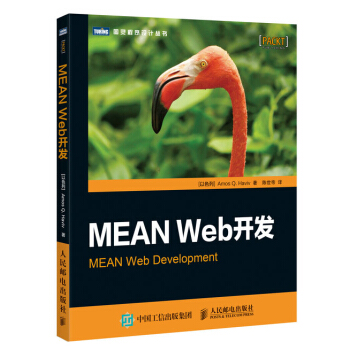


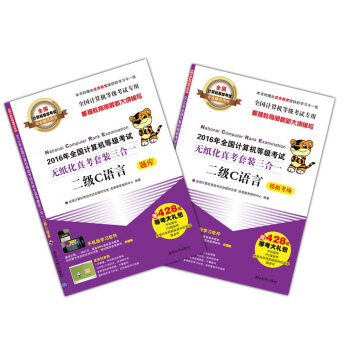


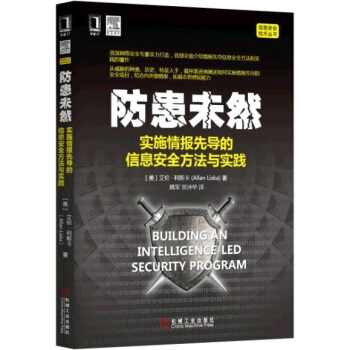
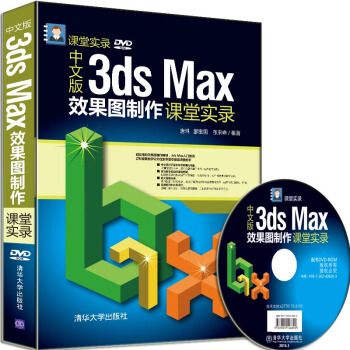


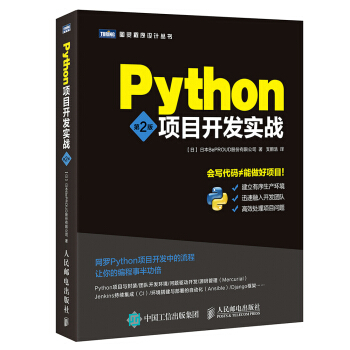
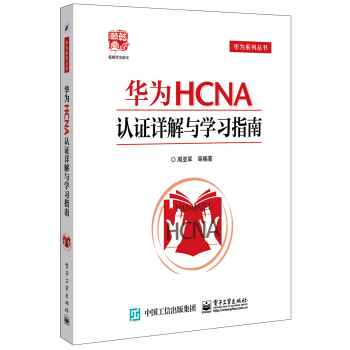
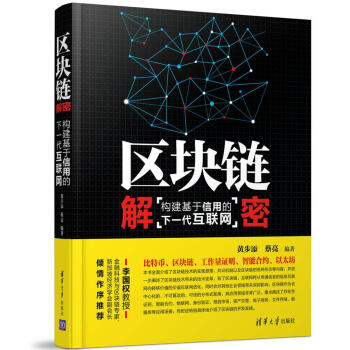


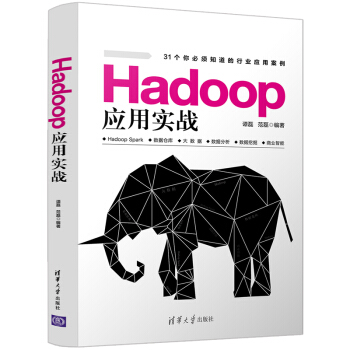


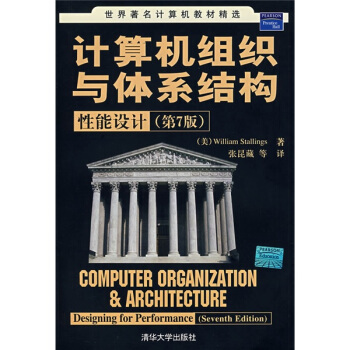
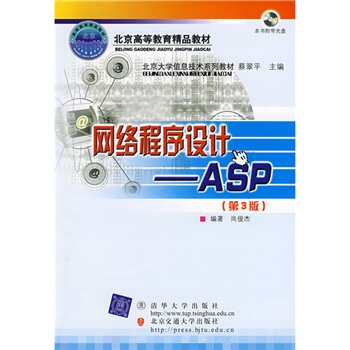

![虛擬安全:沙盒、災備、高可用性、取證分析和蜜罐 [Virtualization for Security: Including Sandboxing, Disaster Recovery, High Availability, Forensic Analysis, and Honeypotting] pdf epub mobi 電子書 下載](https://pic.tinynews.org/10320983/bde06e4a-5a08-43af-b02c-e8b4450f6741.jpg)
